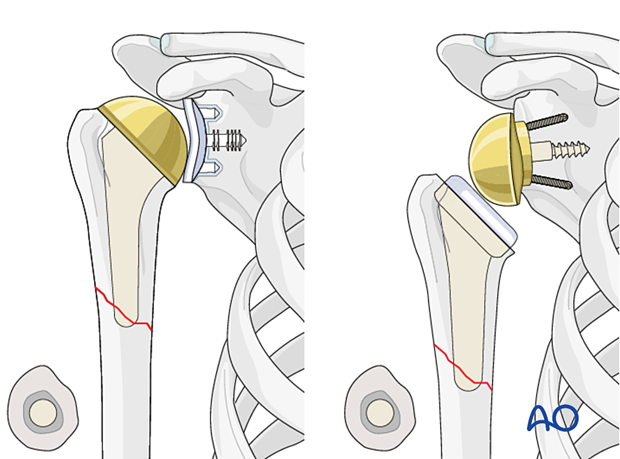Humeral implant stable, good bone
General considerations
The humeral component remains securely fixed, and the shoulder joint is usually stable. The principles of fracture treatment are similar to those used for metaphyseal and diaphyseal humeral fractures without a shoulder replacement in situ.

Etiology
The humeral shaft fracture occurs as a result of:
- Twisting, eg, applying excessive torsional force during intraoperative location of a total shoulder replacement, or as a result of a standing height fall
- Bending, eg, as a result of a standing height fall
- Osteopenia
- Impaction, eg, excessive axial force during medullary preparation for humeral component implantation
- Distraction, eg, excessive axial force during explantation of a well-fixed humeral component in weak bone
Clinical signs
- Pain
- Swelling and bruising
- Restricted active movement
- Tenderness
- Associated nerve and vessel injuries
Imaging
Plain x-rays, including orthogonal AP and lateral views will show the fracture. CT may be indicated to assess the medullary dimension for revision implantation and fracture management.













